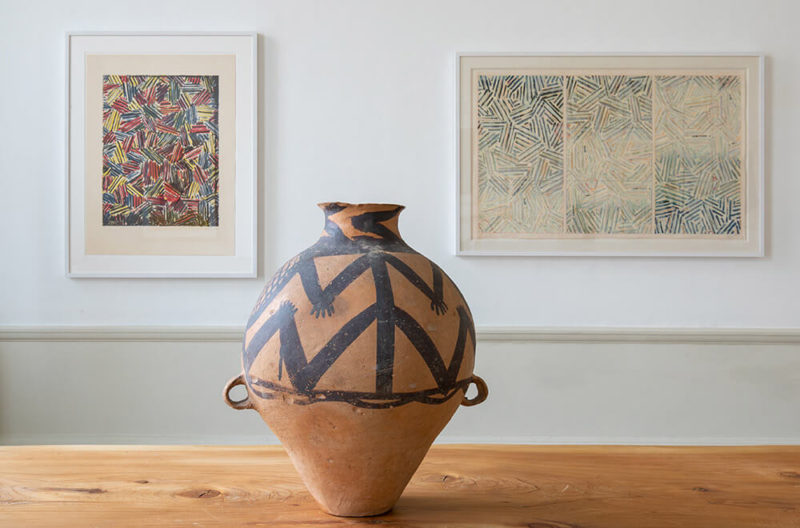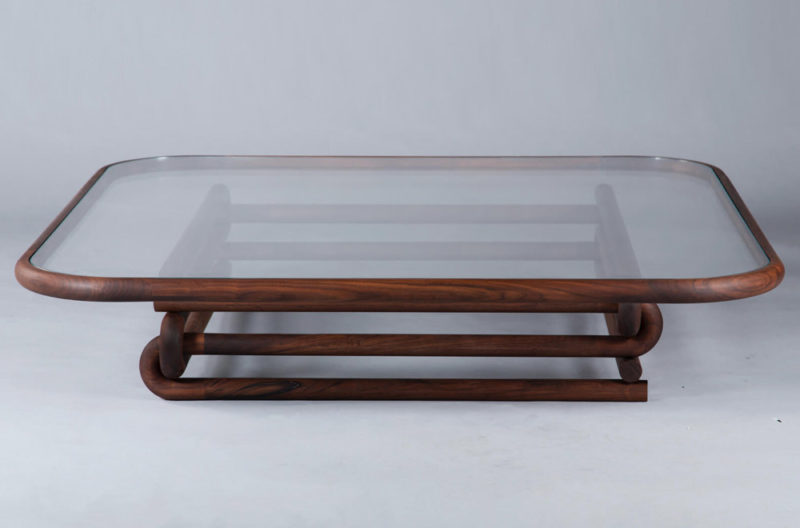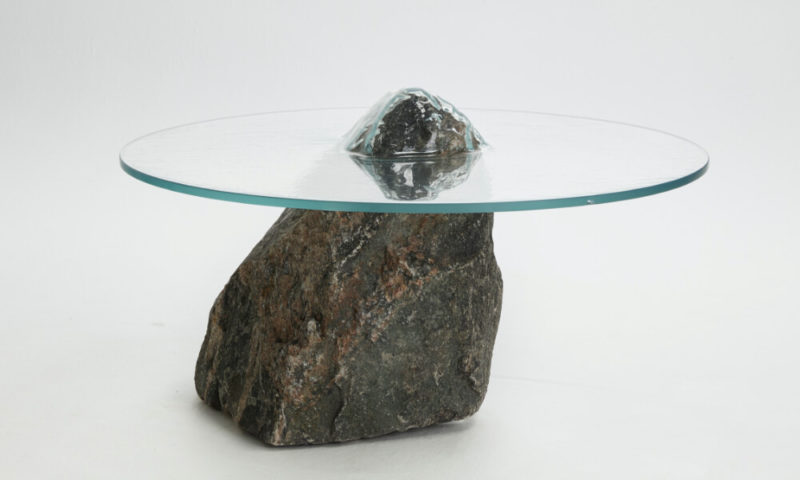Julian Watts: Homelife
Sculptural works conjured from close observation of nature, which artfully play with form and function.
Patrick Parrish Gallery, 50 Lispenard St, New York
10th September – 16th October
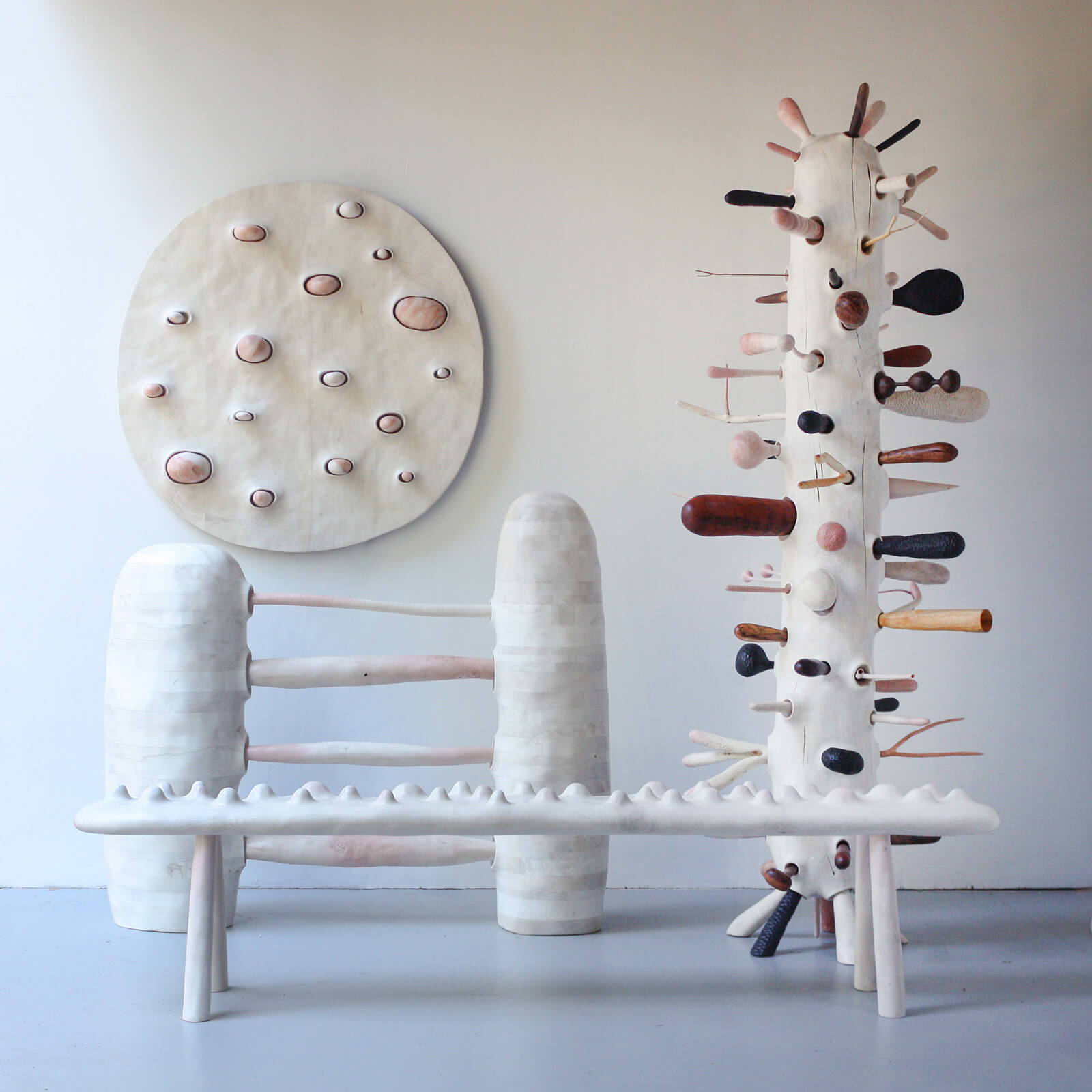
Installation view
COURTESY: Patrick Parrish Gallery
IT’S ENTIRELY COINCIDENTAL that Oregon-based designer Julian Watts should debut his new nature-inspired collection during one of the state’s worst wildfire seasons. Comprised of amorphic, carved wood pieces, Watt’s latest series derives from a profoundly introspective exploration of the forests and mountains that surround his remote house and studio. The region came under severe threat in the past few weeks, and so it’s somewhat bittersweet that this collection should reflect what the young talent defines as home. Thankfully, home and studio were spared.
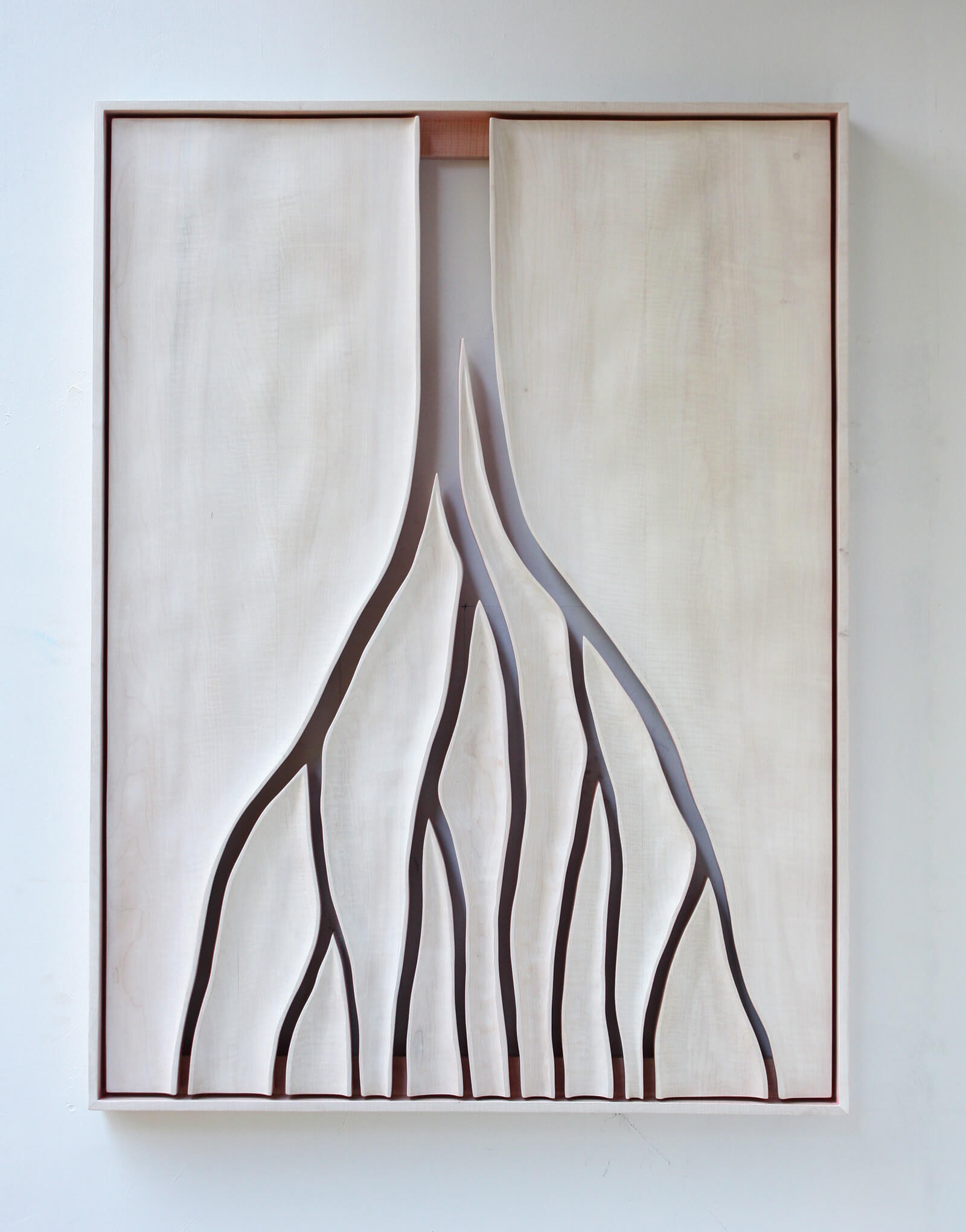
Julian Watts, ‘Stream’, 2020
COURTESY: Julian Watts for Patrick Parrish Gallery
On view at New York’s Patrick Parrish Gallery through mid-October, free-standing and wall-hung works entitled ‘Bench’, ‘Moon’, ‘Tree’, ‘Stream’, ‘Us’, ‘Ridge at Night’, and ‘Trail at Night’ explore themes on both a macro and micro scale. The Home Life series draws parallels between the corporeal interactions we have with the objects around us, and the larger ecosystems that make up our world – blurring the boundaries between space and its inhabitants. Though already a self-proclaimed hermit who spends much of his time living and working in this rural setting, the designer took the COVID-19 lockdown as an opportunity to carefully observe his own five-acre backyard. He transcribed the distilled moments and shapes he uncovered into deftly-crafted tactile forms.
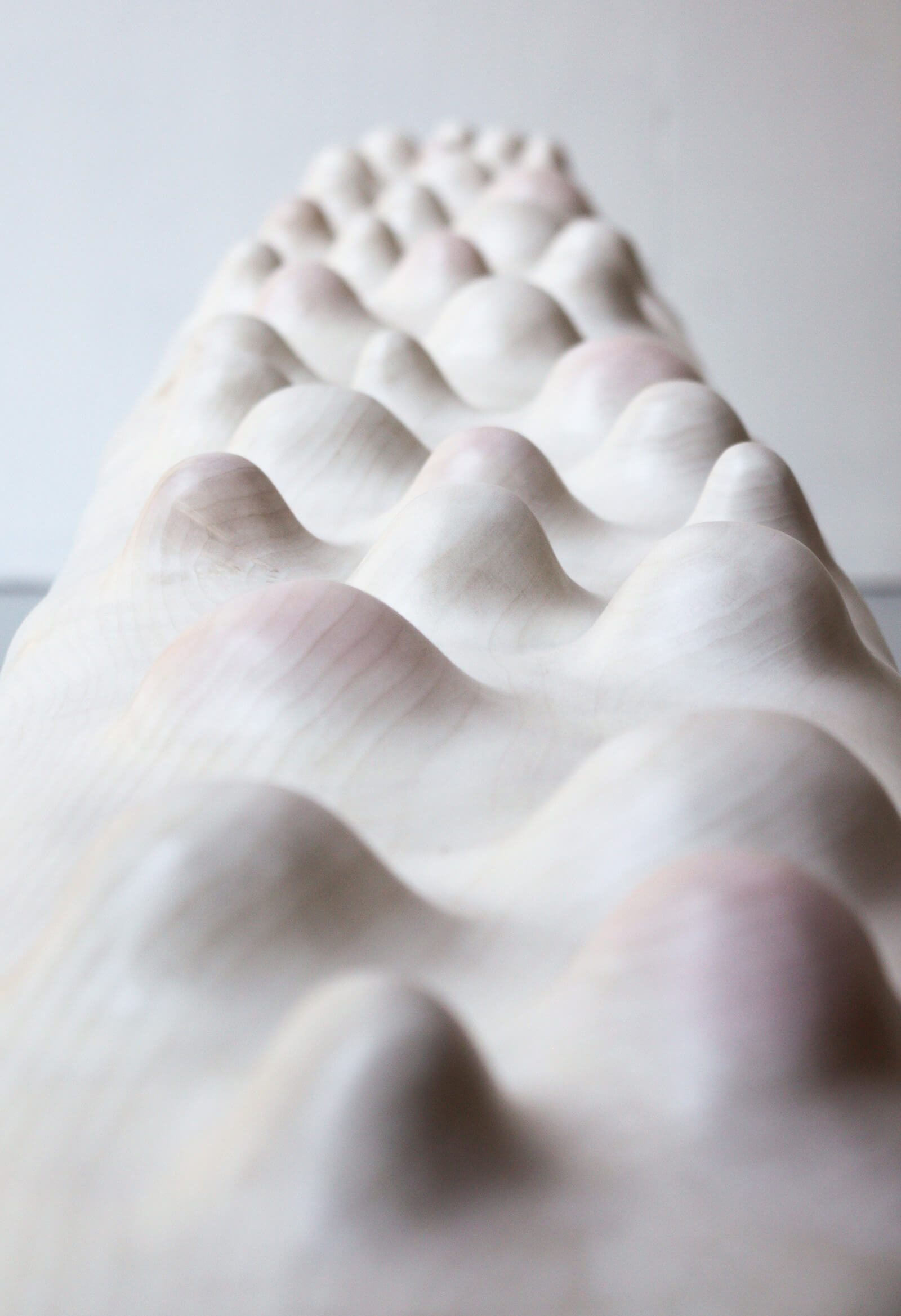
Julian Watts, ‘Bench’, 2020 (detail)
COURTESY: Julian Watts for Patrick Parrish Gallery
“My work has always been rooted in the home,” Watts reflects. “I started my career making spoons and bowls and eventually moved on to classic furniture. I’ve always had a connection to domestic environments. However, my work now takes that idea and blends it with a sculptural and conceptual approach. Home can be a spoon or a bowl, but also a hillside or a night sky. These images and archetypes are all intimate and connect with the body. They’re part of a larger natural world and can be rendered in wood.”
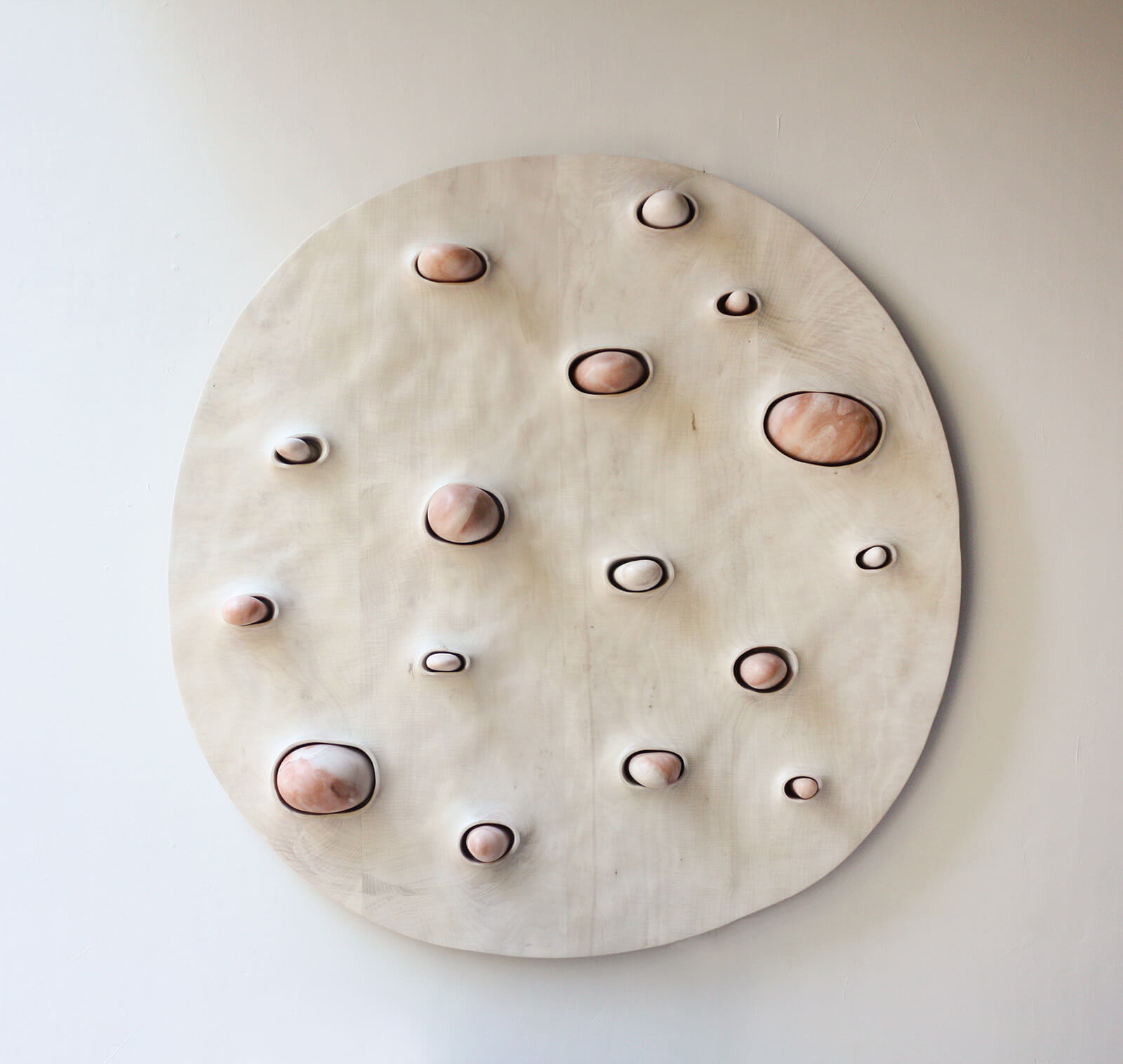
Julian Watts, ‘Moon’, 2020
COURTESY: Julian Watts for Patrick Parrish Gallery
Building on years of training and autodidactic mastery, Watts pushes the properties of wood in new directions. Applying a number of bespoke carpentry and furniture making techniques, he transforms this material into unexpected shapes that incorporate sharp edges and scalloped effects. With the right coat of paint or finish, these smooth, organic – yet cleverly jagged forms – can resemble everything from polished metal to ceramics. This approach allows him to create works that skillfully distort perception and materiality through treatments like trompe l’oeil, but that also challenge function itself.
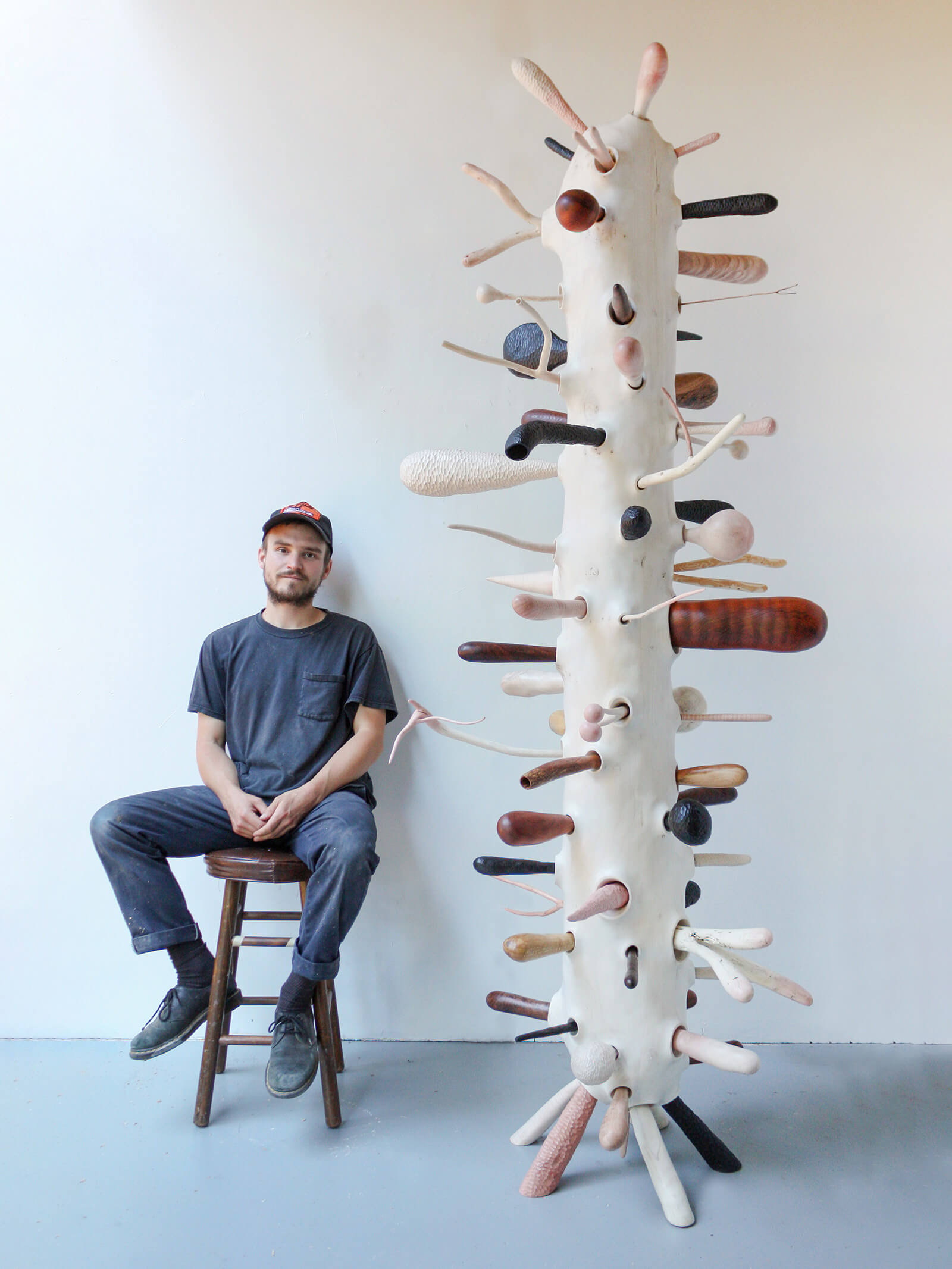
Julian Watts with ‘Tree’, 2020
COURTESY: Julian Watts for Patrick Parrish Gallery
“My work has always played with this tension,” he says. “There’s an evocation in which a particular shape forces you to see a function in something natural. I want people to grapple with the thoughts: ‘Am I supposed to touch and move this? Do I want to?’ The ‘Tree’ piece is a great example of this tension. The 70 individually-carved, screwed-in elements that sprout out of the piece’s central trunk are either grotesque or classically beautiful. They can either be understood as branches or appendages. All of the works in the collection take on their own poetic and symbolic qualities, but what ties them together is the expression of growth, evolution, and opening up – not to mention a hand-carved texture.” The designer best articulates this quality in the ‘Ridge at Night’ wall piece that depicts a nearby mountain top in the dark. A roughly chiselled texture is used to delineate the actual landmass, while a smooth surface denotes the sky.
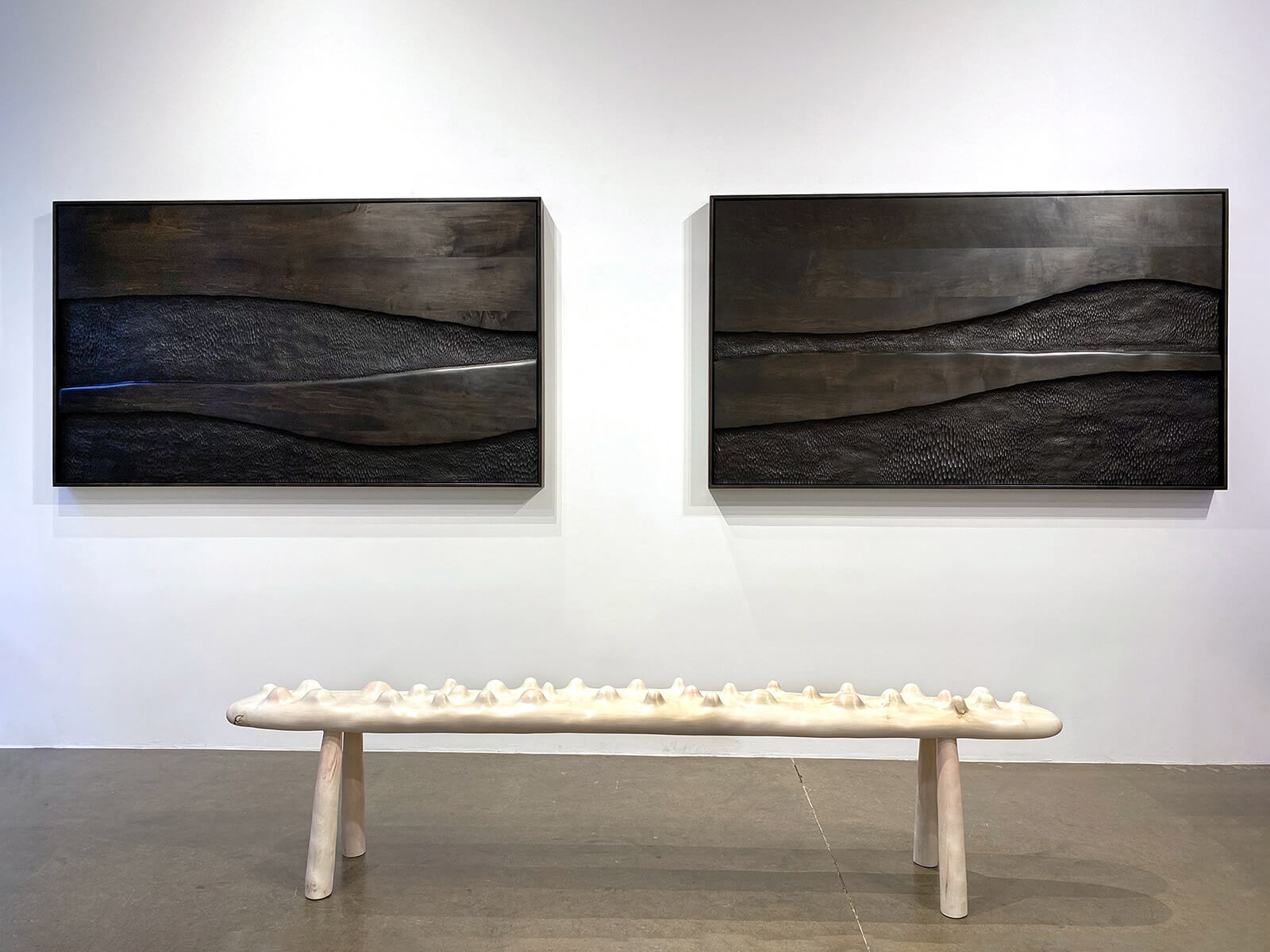
Installation view with ‘Bench’, and diptych ‘Ridge at Night’
COURTESY: Patrick Parrish Gallery
Watts begins each new piece by walking around his property and brainstorming a concept. It’s no surprise that his preliminary drawings are inspired by the surrounding natural world. “They’re cartoonish,” the designer describes. “The challenge comes in translating my loose, irregular gestures into huge solid blocks of wood. To start, I’ll try to superimpose the blob or line in the material and see how I can carve it out. I have to adapt to what the wood reveals about itself and work around knots and imperfections. I’ll use a combination of power and hand tools, different finishing and texturing techniques to keep the living quality of the wood, so it looks like the curves of the human body or hand-sculpted clay. It’s the idea of a living landscape.”
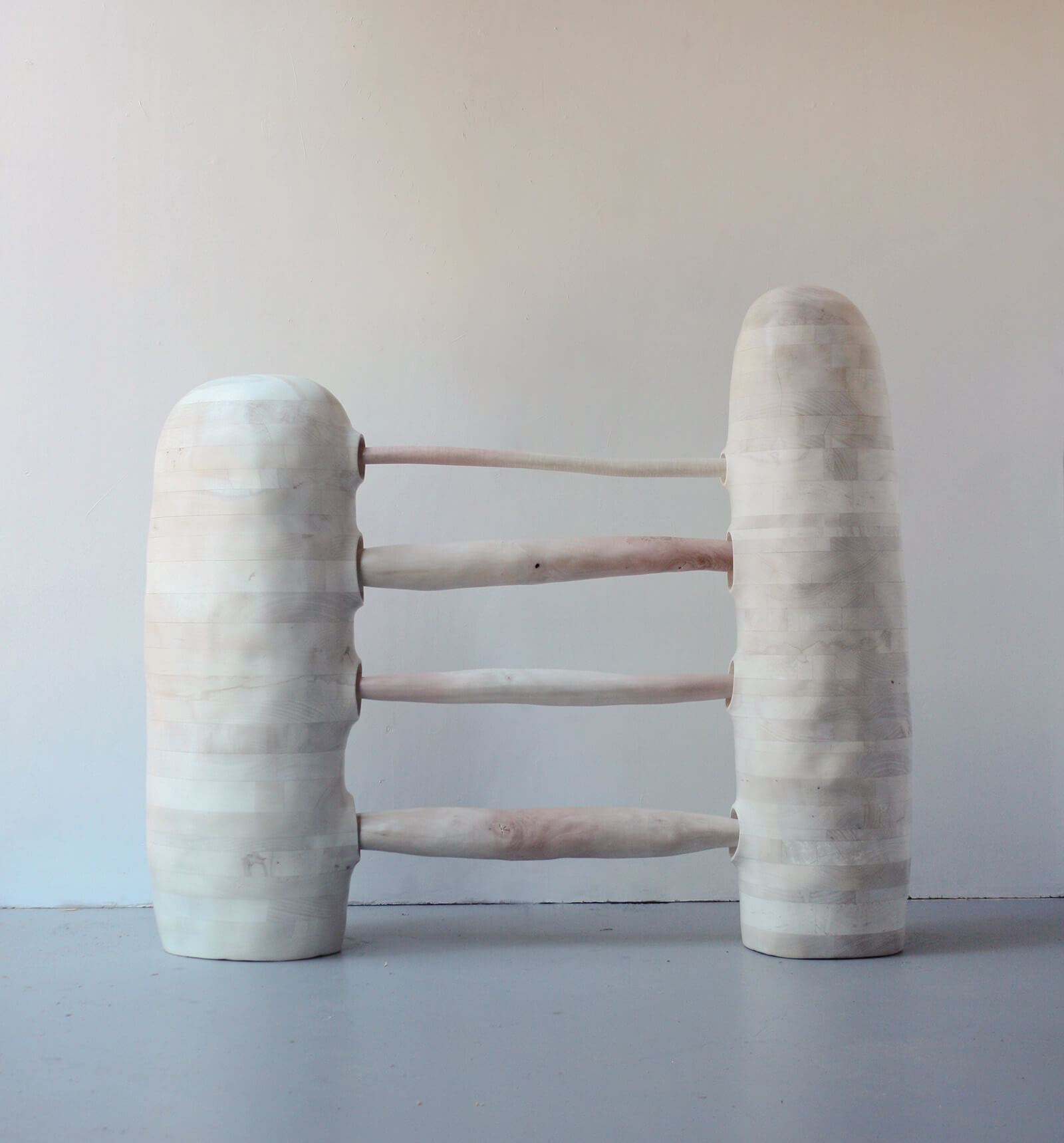
Julian Watts, ‘Us’, 2020
COURTESY: Julian Watts for Patrick Parrish Gallery
Watts’s affinity for exploring juxtaposition in both form and function stems from creating conceptual sculptures during his fine arts studies at The University of Oregon. “It was all about video projections and piles of found material,” he recalls. “There were no woodworking or craft-based processes involved.” His passion for wood developed when he got a job at a woodshop right out of school. “I started collecting small scraps of wood and teaching myself how to whittle small objects. They became more sculptural, and my influence from art school, the conceptual level, started to seep in. My work started to scale up.” Watts quickly forged a thriving studio that brought together the best of both worlds. He began exhibiting at major galleries and fairs across the country – and was a finalist for the 2018 Loewe Craft Prize.
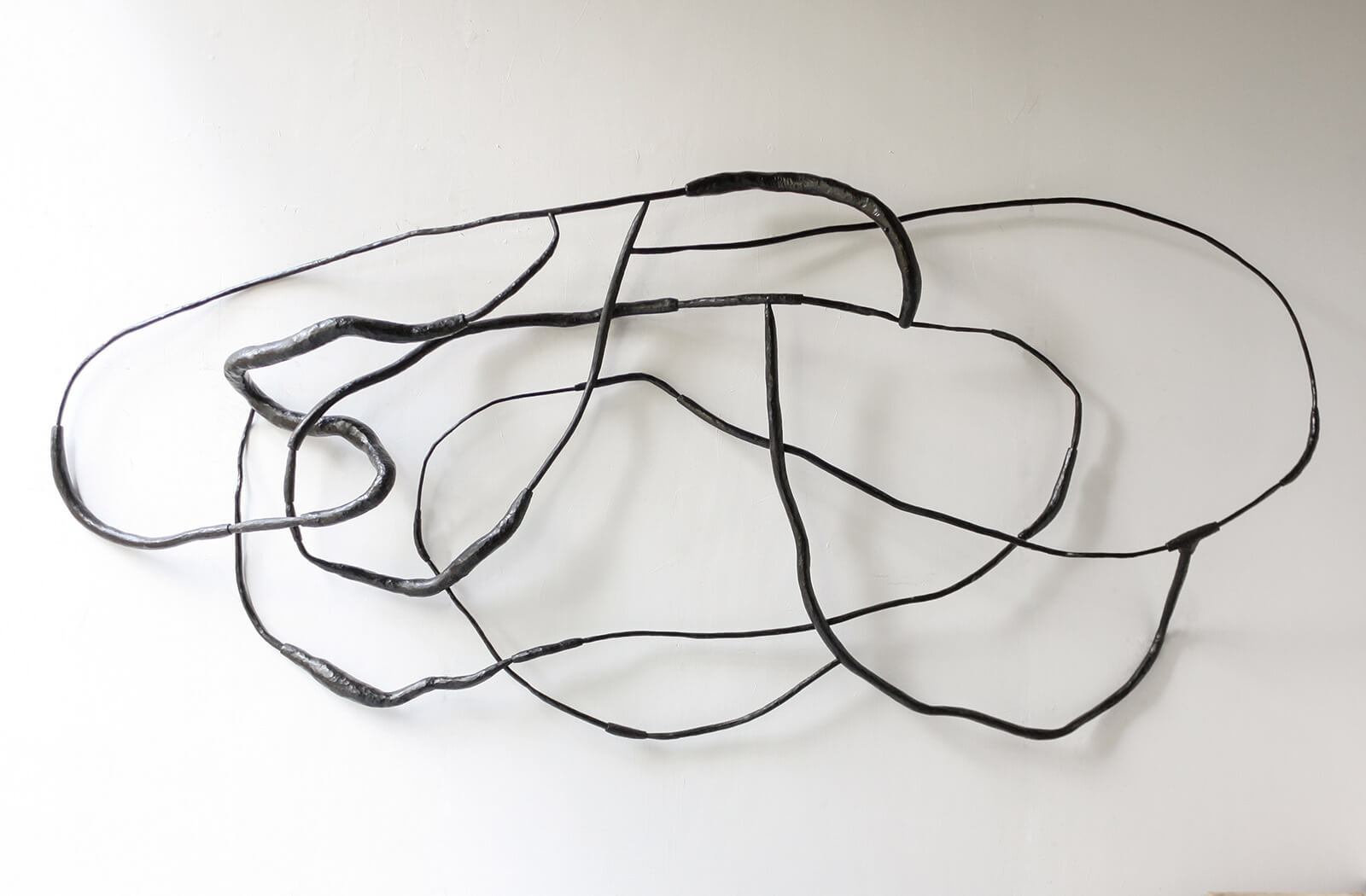
Julian Watts, ‘Trail at Night’, 2020
COURTESY: Julian Watts for Patrick Parrish Gallery
Though Watts was gaining a lot of attention, he and his partner decided to move away from the expensive city and find a more rural place to live. “We wanted to be near nature and have more space,” he explains. “At that point, all of my works were being sold in New York, so there wasn’t much keeping us in the Bay Area. In Oregon, it just so happened that there’s this guy five minutes up the road that mills his own Big-Leaf Maples. He became my main purveyor of wood.” Watts’s move allowed him to develop a closer relationship with the subject matter that is so integral to his work. In many respects, Watts was prepared for COVID-19 long before it hit. Isolation, focus, and maintaining a close connection to nature are vital aspects of his practice.
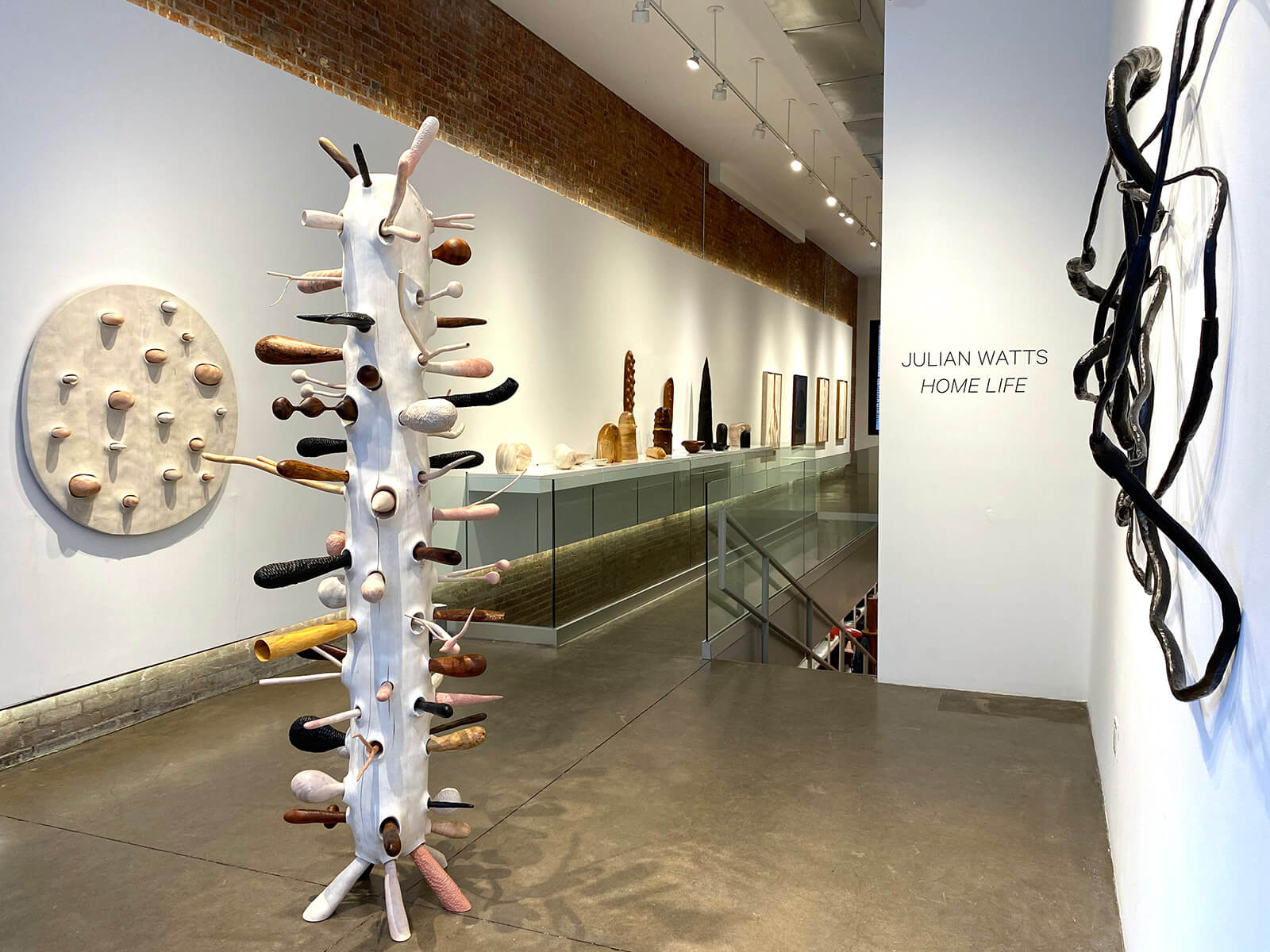
Installation view
COURTESY: Patrick Parrish Gallery
Julian Watts: Homelife at Patrick Parrish Gallery. Prices range from $2,200 – $85,000.




